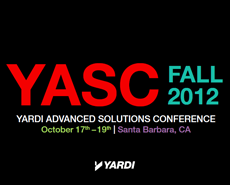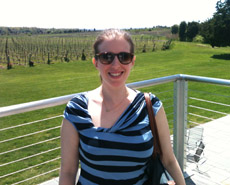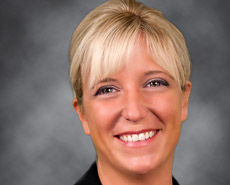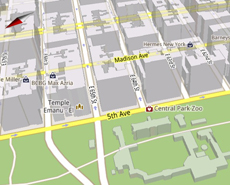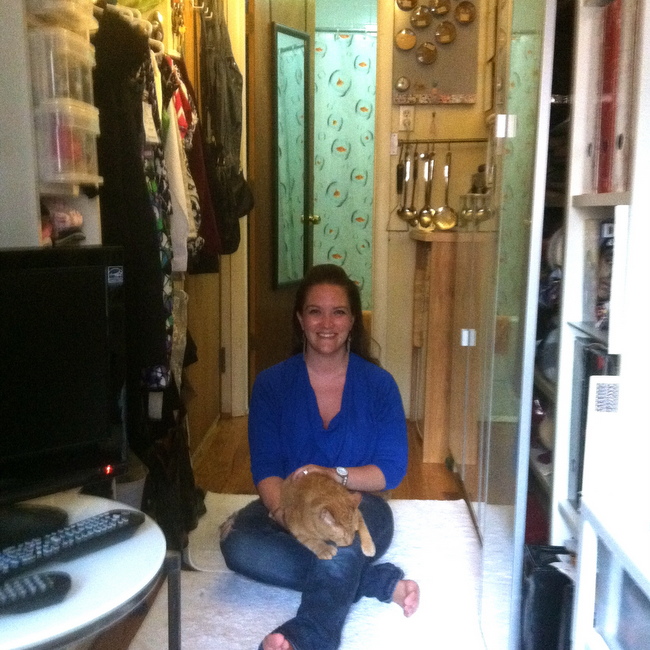Ever since Apple’s rebirth as a tech leader, the company’s release conference is one of the most talked about industry events of the year. The tight-lipped culture of Apple usually means that Mac rumors were largely speculative – no one on the outside really knew what to expect until the day finally arrived. While there were a number of upgrades and improvements announced during Wednesday’s iPhone 5 release announcement, I was disappointed to see that there weren’t many surprises. One of the pillar traits of the conference, a true reveal of the new product features, was toppled thanks to a number of leaks during the last few weeks, the majority of which turned out to be true. Here’s what Apple confirmed today: Taller screen: It’s still the same width but Apple has increased the height from 3.5” to 4”. It’s still one of the smallest in the market so why does this matter? According to Apple, it improves user experience by providing more visible space above the virtual keyboard but by keeping the width the same you can still comfortably use the iPhone with one hand. Touch screen: Touch sensors were built into the display glass which enabled Apple to bring the phone down to a slim 7.6mm thick. 4G LTE: A consistent point of argument for competitors and a pain point for Apple fans during the 4S release last year, the iPhone 5 does have LTE now and Apple claims to have done it right by engineering around the standard battery suck that is traditional LTE service. Aluminum backing: Opposed to the glass backing that we saw on previous versions, the iPhone 5 housing is glass on the front and aluminum on the back, a reflection of their notebook design. A6 CPU Chip: The competitors are all running the Dual-core 1.5 GHz Snapdragon S4 and while we don’t have a comparison chart for Snapdragon vs. A6 we can see that Apple has given users a significant boost in performance (image, above, from CNET.com) from their previous A5 chip. Camera: Few improvements were made here from the 4S regarding resolution but it does claim faster photo capture, a low light mode, a built in stabilizer, an improvement to the panoramic photo setting, as well as the ability to snap pictures while shooting video. Microphones: Apple added another microphone from the 4S for a total of 3; they can be found on the front bottom, top, and the backside top near the camera. New connector: If you’ve had an iPod at all since 2003 you are familiar with this 30 pin connector, nicknamed Lightning. A few additional upgrades will be coming from the new operating system, iOS 6, update that will be released on Tuesday, September 19. When can they be ordered and how much does it cost? Devices can be pre-ordered Friday, September 14 and phones will arrive in stores exactly one week later. The price point hasn’t changed for the newest phone; with a new two year contract a 16GB will cost $199, 32GB $299, and 64GB $399. If you’re willing to sacrifice a few upgrades you’ll be able to pick up the 4S 16GB for $99, or an 8GB iPhone 4 for free. One big big disappointment is the lack of NFC (near-field communication) which has been available on Android phones for over a year. The technology is still in adoption infancy but is making significant progress with programs like Google Wallet. However, looking at the way Apple handled LTE, perhaps they’re simply not happy with the current technology and are looking for a way to do it better. If you’ve looked at the numbers you know that despite all the hype, Apple doesn’t come close to a majority market share for consumer smartphones – Android has that title with over 68%. That being said, Apple does have devoted (and vocal) user-enthusiasts. There has always been an outstanding...
The New A-Team
Extreme property management
These days, a capable property manager must carry an extra-large toolbox. An ambassador for the building with an increasing number of responsibilities, they must have an ability to negotiate a lease with a tenant, analyze a profit-and-loss statement, bid and execute a service contract with a vendor, solve problems of every description and lead a multifaceted team. In addition, the team leader must have an outstanding ability to work effectively with a wide variety of people. They must be equally at ease interacting with the CEO of a Fortune 500 company and with the crew that keeps the property clean. If an individual “is not flexible enough to interface with that broad spectrum of people, he or she isn’t going to be a very effective manager,” notes Thomas Kruggel, senior vice president of operations for Hines’ western region. That has become all the more necessary as a result of the recession, during which the increased emphasis on cost-effective operations further blurred the line between traditional property management and asset management. “The property manager’s job description has evolved,” notes Marla Maloney, executive vice president & head of property management for Cassidy Turley. The property manager must be able to think creatively about the asset’s role in the client’s strategy, as well as to drill down into the activities that keep the property running smoothly. In addition, warp-speed advances in technology are influencing the makeup of the real estate management team. While the trend does not necessarily stack the deck in favor of Generation Y, executives say that owners and service providers now expect a high degree of adaptability to a world where property managers routinely walk the property and convey a message via tablet or smartphone. Service providers and owners also paint a picture of...
Clark LaForge
Yardi
Perhaps there’s something innately special about people named Clark that lends naturally toward a life of duality, not to mention innate problem-solving aptitude. Clark Kent, as we all know, was actually Superman. Yardi Systems Application Service Provider Specialist Clark LaForge also has an impressive out-of-work alter ego. While he does most of his crime fighting on the clock, keeping Yardi’s hosted clients up to current protocols, secure and perfectly load balanced, here are a few things that make Clark a particularly interesting member of the Yardi IT staff. -He was on the football field at Memorial Coliseum in Berkeley, Calif., during The Play, the famous Berkeley vs. Stanford band + gridiron mosh pit that was Cal’s five-leg lateral upset win over the Cardinal in 1982. What was a high school student from nearby El Cerrito doing on the field with the Cal band during the game? It was Clark’s job to make sure the marching band Bears stayed hydrated during the game. -Despite launching his own music career as a clarinet player, with talent that sent him to Europe with a teenage traveling wind symphony, he decided bass drum was his second favorite instrument, and ended up being named to the prestigious Cal State Honor Band as a drummer. That landed him back on the field at Memorial Coliseum, where the UC Berkeley band leader, charged with instructing the high school students, was perplexed as to why the bass drummer didn’t have exacting technical skill. -Even though he played classical music and show tunes in band, out of school Clark was listening to NWA, Ice-T and Too Short .. and DJ-ing with their beats, when he wasn’t on the floor busting out 80’s moves like the Smurf. Fast forward two decades and change, and...
YASC SB 2012
Event already sold out
So first, the bad news .. the Yardi Advanced Solutions Conference (YASC), coming up in Santa Barbara, Calif. from Oct. 17 to 19, is already sold out. Nearly 1,000 Yardi users from around the nation will gather at Fess Parker’s Doubletree Resort on Santa Barbara’s beautiful waterfront to receive training and updates on the latest Yardi product releases, learn about new solutions for their real estate-based businesses, and network with fellow industry professionals. There will be 182 courses offered. Twelve years ago, the first-ever YASC featured 30 courses and 150 people attended. Since then, the event has grown rapidly and is considered one of the best ways to get hands-on training on Yardi software. Those in attendance will not only interact closely with Yardi staff who can help address any technical challenges, but will also enjoy beautiful southern California fall weather and the gorgeous oceanfront views of the Doubletree Rotunda during outdoor lunches and evening mixers. If they have any free time, visitors might try some of Santa Barbara’s delightful local restaurants, outdoor activities and sightseeing. Held biannually on the East and West Coasts, the Santa Barbara-based YASC will be held away from the Central Coast for the first time in 2013, when the West Coast event will be held in Anaheim, Calif. from Oct. 9-11. The trial location offers easy access to LA-area airports and nearby attractions like Disneyland, and allows for a larger number of conference attendees. The East Coast event will continue to be based at the Washington Hilton from May 21-23, 2013. If you missed out on getting registered in time to attend the Santa Barbara YASC, we’ll look forward to seeing you at one of the 2013 events. But you can also follow along with all the happenings at...
Jessica Fiur
Multi-Housing News
One of the first things that Jessica Fiur learned when she became online editor at Multi-Housing News was that Fannie Mae and Freddie Mac aren’t your landlord’s charming Midwestern aunt and uncle. For the New York native, talented writer and pop culture aficionado, learning all about the world of real estate has been an eye-opening – and often humorous – experience. As an apartment renter in New York, Jessica draws many of the stories she uses for her Multi-Housing News blog from personal experience or tales she hears from other renters. The city’s internationally known apartment market, famous for its limited supply, high demand, tiny spaces and sky-high prices, continues to prosper. “As a multifamily reporter, I’m happy they’re able to raise rents, but as a renter, it’s a little scary,” said Jessica, who recently helped her younger brother find a place in the city and drew blog insight from his challenges. “You pretty much have to be ready to sign if you like something, because someone else is coming up right behind you.” She also uses hot news topics, inspiration from movies, and her own life to inspire creative content about renting, property management, marketing and a host of other topics. A recent post on U.S. Olympian Ryan Lochte challenged apartment communities to think smart about protecting their community brand. Another asked “Is your apartment like (the summer blockbuster film) ‘The Avengers’?” Sound like a stretch? Both posts offer solid logic and effective management ideas. “I love pop culture, so if I see a movie, even if the subject is not about apartments, there are universal themes. Since I like pop culture so much I always try to integrate it,” Jessica said. She picked up the journalism bug while studying at New York...
Net-Zero Design
Ultimate energy efficiency
Architectural design and build are art forms of a functional sort, the kind that balance creativity with budget constraints. Perhaps if budgets weren’t an issue, there’d be nothing but beautiful, environmentally-friendly buildings. More realistically, sustainable design for the earth must also be sustainable for the company’s bottom line. According to Scientific American, homes and commercial buildings contribute to approximately 40 percent of the nation’s energy consumption, not to mention billions of dollars in energy costs for residential and commercial customers. By making more efficient buildings, the nation’s carbon footprint can reach new lows while saving consumers money. Pushing down development costs for such projects is the best way to achieve more widespread adoption of these techniques. Net-zero energy designs are models of such efficiency. These buildings are like miniature factories, producing enough renewable energy to fuel the inhabitants’ operations without drawing from the grid. In fact, net-zero buildings can even create a surplus of energy that is sold to energy providers or exchanged for credits. The concept has appealed to environmentally conscious designers and consumers throughout the nation. From 2005 to 2011, residential green building experienced an increase of 15 percent according to a McGraw-Hill Market survey. Communities such as Serenbe in north Georgia and Prairie Crossing of Illinois are among those that use sustainable building techniques, including LEED certification. They’ve also incorporated large amounts of preserved open space into their communities, and encourage residents to use alternative transportation. Builders KB Home, Shea Homes, and Nexus EnergyHomes jump started bi-coastal net-zero communities in eight states with notable success. In the commercial sector, there are 21 certified net-zero commercial buildings across the nation and another dozen in the marking. Universities are also on board. UC Davis’ West Village has reined in the power of zero-waste designs, and boasts that it is the largest net zero energy community in the country. Energy efficiency was improved 50 percent over existing standards thanks to innovative building, and the remaining power needs will be supplied by renewable sources, like a biodigester that will recycle waste into energy. While the population of net-zero buildings has grown markedly, it still represents a small fraction of new builds in the nation. Undoubtedly, these structures are capable of reducing carbon emissions and dependence on the grid. Indeed, occupants can bring their energy bills to zero, or better yet have the energy company paying them. So why hasn’t every design and build team across the nation jumped on the net-zero jet plane? The reasons are multifaceted but mainly circle back to the ever-present balance sheet. Net zero properties can be a tough sell. The buildings are only as efficient as their occupants. A multitude of small decisions each day help the building operate optimally: turning off even energy efficient appliances when not in use; maintaining water and waste recycling systems; and being aware of resource consumption. Getting the most out of net-zero buildings requires a conscious shift in mental processes. Firms recognize that traditional designs require less on the part of potential buyers, increasing the buildings’ marketability. Firms face a myriad of costly obstacles when building in different regions. In the Southeast, passive heating and envelope designs transform buildings into saunas. Advanced low-energy cooling systems increase costs in this region compared to other areas. Net-zero energy designs require spacious, flexible lots and ideally offer access to sunlight and cross breezes, all things that can be hard to come by in metropolitan areas. Firms with interest in energy efficient design must first overcome the challenge of keeping costs low, regardless of the location. Data from Inman News suggests that net-zero homes cost $30,000 to $40,000 to build, but those figures are on the rise along with construction costs as a whole. Perhaps the weight isn’t as heavy as it first seems. Projects by MoSA reveal that solar energy has become more accessible, dropping nearly 50 percent in recent years. Net-zero...
Maria Stanton
Miller Valentine
Need a refresher on your best practices for property management? Refocus on these two simple tips from Maria Stanton, Director of Operations for Property Management at Miller Valentine: Get your team on the same page, and focus together on your customers. They are lessons she learned as a young leasing manager for a high rise apartment community in Cleveland, and have been the foundation for a successful career in the property management industry. In her first multifamily experience, the then 21-year-old Stanton managed a staff of 40 people, and many of the employees were older than her. To make the community successful, she focused on building a strong team and working together cohesively to serve every resident – with 1,100 units, no easy task. “Understanding how your people can make or break the success of a community was one of the biggest lessons I learned. Getting that whole team together to accomplish the common goal was really important. You have to get everyone on the same page, understand their responsibilities and buy into the whole picture,” Stanton told us. What’s in the picture? Remembering that the customer comes first. “We sometimes get caught up in so many parts of our business that we can forget about the customer. It’s so important to maintain that understanding of what the customer wants.” Her early experiences in real estate helped hone that skill – while going to college, she simultaneously earned her real estate license and sold homes for a developer. After landing at the REIT-owned Cleveland high rise, Stanton became a community manager, Sales and Marketing director, then Regional Operations manager before moving to her current role as Miller Valentine’s Director of Operations (she has been with the company for over six years). Today, she oversees...
Google Earth 3D
Now on iOS
The world is not flat. So why settle for a map without topography, ever? Bringing 3D maps to mobile has been a race between Google and Apple, with Google sprinting over the finish line with Google Earth 3D for the iOS platform last month. The Google Earth app is compatible with the latest Apple devices – iPhone 4S, iPod touch, and 2nd & 3rd generation iPads. Apple has yet to offer its own comparable feature. Users on older device models can use the maps if they’re running iOS 4.3 or later. Through the 7.0.0 version, Google reveals to iOS users what Android devotees have been seeing since June of this year. Here’s a video that demos the product for Android: 14 major regions are already converted to Google’s 3D imagery: Los Angeles, San Francisco Bay Area (including the Peninsula and East Bay), Boston, Boulder, Charlotte, Lawrence (Kansas), Long Beach (Calif.), Portland, San Diego, Santa Cruz, Tampa, Tucson, and Rome (Italy). By the end of the year there’s a promise to add more cities worldwide. It’s a complex, high-tech process to build these maps, entailing strategic fly-overs of metropolitan areas with camera-equipped planes that flew in tight circles to get shots at 45 degree angles. Back on the ground, the high-resolution imagery and local geometry are put back together, creating 3D tiles that can be viewed from any angle. Virtual tours are no novelty these days, but Google, as always, is aiming for innovation. Over 11,000 virtual tours of popular sites in over 110 countries and regions can be revealed swiping the tab located at the bottom of the main Google Earth screen. These pre-created tours will dynamically be updated with interesting locations in thumbnail size for a broader palette to choose from in the...
Career Growth Spurt
More jobs for multifamily
Employment survey results from the National Multi Housing Council reveal what apartment industry insiders already know – a strong rental climate nationwide is driving job growth. In other words, it’s a great time to become a multifamily professional, or take advantage of new opportunities to expand your skills, relocate to a new market, or move up to a higher level position. The NMHC’s 2012 Apartment Compensation Survey documented job and compensation growth, anticipated future hiring, benefits and perks, creation of new positions, and more. Jobs are being created in online marketing/social media management, systems technology, maintenance and management. “Digital marketing experts are in demand, as are technical trainers, who help staff members at the site level learn how to use software and interfaces relevant to their jobs,” Esther Bonardi, industry principal for RentCafe, told us recently. Data for the NMHC report was drawn from 93 apartment companies with a combined 50,000 employees. Among the findings offered to the public: 65 percent of the firms surveyed grew their staff last year Firms that added employees grew their staff size by an average of 11 percent Salaries for leasing, maintenance, and property management grew an average of 3 percent 62 percent increased their merit bonus pool 77 percent of firms reported improved financial returns in 2011 78 percent expect those returns to improve again for 2012 Common perks offered for employees in the multifamily industry include education assistance, housing discounts, telecommuting, flex hours and wellness programs. How common are they? Among survey respondents: 53 percent of apartment firms offered a wellness program 49 percent allowed telecommuting 23 percent offered flexible hours Over 60 percent offered education assistance to various staff 74 percent offered housing discounts to on-site staff The full survey summary is for sale and...
A Truly Tiny Apartment...
Living in 105 square feet
Take an average sized apartment and reduce it by 90 percent. Could you live there? With all the buzz in the news lately about micro-sized apartment living – particularly in markets like New York and San Francisco, where space is limited and renters will pay top dollar for even a closet-sized space to call home – we wanted to get the inside scoop. Literally, what is it really like to live in a teeny, tiny, itsy bitsy apartment? Is it sustainable? Does it drive you crazy? So we found Genevieve Shuler, who calls herself the Small Space Savant, to get our questions answered. For the last eight years, she’s called a 105 square foot “studio” in New York’s Greenwich Village her home sweet, albeit very small, home. Genevieve is a regular gal who like most of us owns a few extra pairs of shoes and loves her cat. She’s managed to make her micro living situation work with a few creative adaptations, like washing her dishes in the shower. Read on to find out more about how she functions in her pint-sized apartment. It’s inspiring insight for simplifying your life. She’s become a creative organization expert, even helping her friends and strangers create solutions for their own small spaces. TBS: What adaptations have you made to your life to make life in such a small space viable? GS: The biggest adaptation I’ve made in my life to make my small space work, is doing my dishes in the shower! I don’t have a kitchen sink, and my bathroom sink is too small to be practical for washing dishes, so my mother came up with the idea for me to do them in the shower. I have a corner shower caddy rack with those triangle...
Linda McFarland
Yardi
Linda McFarland’s work at Yardi’s Amsterdam office has been a homecoming of sorts. The Netherlands native lived for eight years in the U.S., where she worked in property management and met her husband, before coming home to Holland nearly four years ago. A world traveler, Linda has an adventurous spirit that drew her to live abroad in Playa del Carmen on Mexico’s Yucatan Peninsula as a college student, and to move to the U.S. shortly afterwards. Settling in the Atlanta area, she entered the Ritz-Carlton hospitality management program and worked in the hotel industry for several years, meeting her husband Robert in the process. Then she moved on to an assistant property manager position in midtown Atlanta, entering a new industry that she thoroughly enjoyed. As part of her work for First Communities, she was a Yardi Systems user. After their first child was born four years ago, Linda and Robert decided that if they ever wanted to live in the Netherlands, it was time to make a move. They didn’t want to be settled in Georgia and then uproot their family, so they made plans for a trans-Atlantic relocation. Before leaving the U.S., Linda noticed an opportunity for an office manager position at Yardi Systems’ Amsterdam office, and jumped at the chance. She was familiar with Yardi from her work in property management, and just the sort of “international, growing, dynamic” company that she wanted to work for. Yardi’s Amsterdam office serves primarily European commercial real estate clients. Linda has recently taken on some marketing responsibilities in addition to her tasks in human resources and the front office, and says she loves the variety of her job. She starts every day with an hour-long run from the family’s Amsterdam home to the beach....
Multigen Housing
For modern families
A marked increase in transgenerational living arrangements has sparked in a shift in the housing industry that could spell success for builders that are willing to explore a change in direction. New Girl, Modern Family, Two and a Half Men, Reba, The Golden Girls. What do they have in common? For decades, media has used the stresses, obstacles, and precarious balances of multigenerational housing as the fuel for sitcoms. Simultaneously, those shows depict real-life scenarios that drive members of different generations and interests together. These scenarios aren’t tools of fiction. Rather, they are reflections of a growing trend in America that is changing the way that builders are addressing the future of real estate. Multigenerational housing has been on the rise and isn’t showing signs of slowing down. The Census Bureau reports a 15% rise in homes containing three generations or more under one roof between 2008 and 2010. Households containing one or more adult who is not a partner or student increased by 21.8% in 2011. Young adults move back in with parents, a parent may move in their children, new immigrants find housing with family—the scenarios vary but one condition remains the same. More people living under one roof is changing the way that builders approach future housing projects. A growing class of unlikely homeowners has also emerged in recent years. An article in Time Healthland explored the increase of non-familial groups that have united to form households. Common combinations include students groups and pairs of young couples. These arrangements save residents money while allowing them to claim larger properties in more desirable areas. The ideal property for this new wave of tenants is a single family structure with features that accommodate—or can be altered to accommodate—large families. Annual predictions estimate a...
Google Fiber
TV + Internet, not cereal
While it is true that Google Fiber contains no vitamin D or riboflavin and in no way contributes to a healthy diet, it does promise some fun prizes in the bottom of the box: 1000mB/second = 100x faster that average Internet speeds Hundreds of channels, plus NetFlix, Hulu, YouTube all in one place Optimized HD clarity Record 8 programs simultaneously on 8TB storage space Here is Google’s hipster-tisement for the service, which will have you singing “Just What I Needed” for the rest of the day: Pricing is divided into three tiers. Broadband-only service is free (see below); 1Gbps service is $70/month; 1Gbps + television is offered at $120/month. A further $300 “construction fee” for the Internet and television services is waived if you sign a contract (broadband-only customers have to pay). The television service comes with a Nexus 7 tablet that also acts as a remote control. And now for the bad news: you can’t have Google Fiber… yet. Bringing in fiber requires a hefty infrastructure upgrade so Google is rolling things out slowly and only to communities that express the highest level of interest. Kansas City is ground zero for the nation’s first “fiberhoods” and pre-registration ending Sept. 9 will determine which areas in the city are first to receive the new service. As for everyone else, well, we could be a while away but once the trial run in KC gets underway in earnest, you can expect pre-registration to open in additional cities. The big idea here is less about the technical specs – the average Internet user doesn’t need and might not even notice 100x faster service – and more about Google’s bid to dominate modern media. Google has pacted with Rovi to license its media technology to power its...
Yves Hajjar
Yardi Systems
When he was 14, Yves Hajjar’s father gave him a gift that would influence the course of his life. It was a used personal computer, and along with the remote control airplanes he loved to fly as a kid, it soon consumed Yves’ free time. With the guidance of a computer engineer mentor in his hometown of Lyon, France, he learned not to be afraid to take the PC apart, put it back together, and replace any parts that he broke in the process. Most of his friends didn’t yet have PC’s , so he was lucky to have hands-on experience with one. Soon, he made an interesting discovery. “I quickly realized while poking around the files on the computer that everything was written in English. ‘Print’ means something in English – it means nothing in French. That made me want to come to the U.S.,” said Yves, now a development team lead for Yardi Systems. Based in San Diego, Calif, Yves is part of the Realtown team. Yardi Systems acquired Realtown in 2011. Four years after his dad bought him the used PC, Yves came to the U.S. to attend college at the University of Massachusetts at Dartmouth, which had an exchange program with a French university. He struggled at first with the transition to a completely new culture, but received a terrific education. The UMass Dartmouth computer engineering program put students together in groups and emphasized problem solving as a learning exercise. Students’ desks faced each other instead of the front of the room. “We were troubleshooting issues, and learning how to fix problems as a team instead of with a teacher,” Yves recalled. The skills he developed, and one significant moment involving a special girl, were the highlights of his undergraduate...
Training Property Managers...
The latest education approaches
As property managers are increasingly asked to behave like asset managers, their training is taking a unique turn. Third-party management firms and management departments within investment firms alike are coming up with more comprehensive and sophisticated approaches to upgrade their teams’ abilities. One particularly innovative effort is a training facility created by Cooper Square Realty Inc. in its office at 622 Third Ave. in Manhattan. Along with the customary trappings of a property management company’s headquarters, the multi-family specialist is installing a 1,500-square-foot training center geared to the needs of managers and superintendents. Seventeen stations provide working models of boilers, burners, elevator cabs, electrical systems, water tanks and roofs. The facility will come complete with a model lobby desk that provides the basis for a discussion about reception and the role of the doorman. Managers-in-training receive instruction in the different equipment through a combination of presentations from experts and video segments. Candidates for manager positions must pass tests on all 17 systems. “They need to know the working parts of each (system) and each piece of equipment so they can be effective property managers,” declares company founder & CEO David Kuperberg, who is a civil engineer by training. Having trained more than 500 professionals since opening a facility at the company’s previous headquarters in 2004, he notes that “what the training center has enabled us to do is to hire people at assistant levels and promote them through the ranks, all the way to senior managers.” That is perhaps an extreme example, but other companies have come up with other efforts, some more targeted than others. Colliers International’s training is not specialized for property managers, but its New Generation program aims at addressing what the company contends is a chronic shortcoming in commercial real...
Creative Retention
Keeping down tenant turnover
Hanging on to the multifamily residents you have is always high on the priority list of property managers. Turning apartments is nearly always a revenue loss, and keeping the tenants you have reduces workload for everyone on the site staff. Getting creative with retention strategies is a challenge for property managers, who must constantly update their techniques to keep tenants happy and 30-day notices at bay. Recent survey results indicate that this is more challenging than ever – in March, a multifamily survey found that 58.5 percent of renters said they “definitely” or “probably” would renew their leases, a drop of more than 6 percentage points from a previous survey. So how to best combat renter wanderlust? We went digging for some creative retention offerings from property management professionals. Here are some of the strategies they’re employing: –Give them free stuff, and they will stay. Some multifamily firms are focusing on lifestyle utilities, like cable television and high-speed Internet service, and offering to pay for those services for the duration or the portion of a residents’ renewed lease, usually in the form of a rent credit. The resident still maintains the responsibility of procuring and managing their own services, but the property management firm gives them a $25-$75 discount on rent each month. –Recognizing the cost of living. Properties in regions where the apartment vacancy rate is low can capitalize on the situation by simply keeping rents the same for the coming year. While the offer doesn’t succeed in maximizing income, it does reduce turn costs and marketing expenses. Renters are less likely to go out and hunt for a home and compete with others for leases if they can stay on at the budgeted price they’re used to. –Upgrading the unit. If a...
Mindy Sharp
Freestone Management
Mindy Sharp is the type of property manager who does it all. From lease-ups to balance sheets to carrying the maintenance pager, the Ohio-based property professional tackles all aspects of multifamily life at Ashton Glen, a picturesque townhome and apartment community in southern Dayton. When she’s not marketing units or touring with prospects, she finds time to handle social media and even have tea parties with young residents. Her grasp of the local rental market and knowledge of her own property is so strong that Mindy manages to rent up to 25 percent of her vacancies sight unseen. “That’s the Mom skill in me,” says the former teacher and mother of two grown kids. “It’s just listening and finding out what they want. I know this property; I know this entire Dayton market like the back of my hand. Once I know what it is that (the prospect) wants, I can assure them that they’ll be taken care of.” Despite challenging times for the Dayton area apartment market due to the economic downturn, Mindy has kept Ashton Glen close to full occupancy at all times. The community has military families among their resident base, so deployments often contribute to leasing turnover. She’s especially proud that two of the deploying families made plans to return home to Ashton Glen once they return stateside. “Home to them means not just the United States, but also this apartment community. Wow. And one of these families is actually paying rent on their apartment while absent. This says it all,” she wrote on her blog, where she is brutally honest about the ins and outs of daily property management. Some days, there are more outs than ins. When we talked with Mindy last week, she was on duty as...
Snapdragon S4 Pro
Qualcomm's quad core tablet
Qualcomm’s Snapdragon S4 Pro quad core tablet is close to consumer release, a moment much awaited by developers interested in making apps and games for the S4 Pro platform. Early reviewers report that they are impressed by the speed, performance and graphic capabilities of the SoC tablet and anticipate it breaking to the front of the Android pack. Here’s a look at the features: SoC stands for System-on-Chip devices that hold the electronics for a complete, working product on a single chip. Imagine the microprocessor, the digital signal processor (DSP), RAM and ROM, and graphics processor, all on a small chip with an ancillary reduction in power. The result is tremendous speed and mobility. In August of last year, Qualcomm was introducing the Snapdragon classification of its chips and mobile solutions, ranked after the processor’s power in S1, S2, S3, and S4 classes. To simplify things, the company presented afterwards four secondary versions for the superior class S4: Prime, Pro, Plus, and Play. The top version S4 Prime is meant for smart TVs and home theater systems, but the following version, S4 Pro, is the one that made it to the tablets and ultraportable ARM, a bit more appealing to the public. It is loaded with goodies and gadgets, including: 4 Asynchronous Quad CPU cores running at up to 1.5GHz; Adreno 320 GPU; 10.1 inch display running a 1366 x 768 resolution; 13 Megapixel Camera with Flash; 1080p HD video and playback; 7 microphones; 2GB of RAM and 32GB of inbuilt storage running on Android 4.0.4 Ice Cream Sandwich; Android 4.0 ICS; 5200 mAh battery; Charging dock with two USB 2.0 ports, port for HDMI and Ethernet. The APQ8064 CPU, named Asynchronous Symmetric Multiprocessing or SMP, has the ability to be clocked at different...
Universal Lighting
Spotlight on seniors
All eyes are on the baby boomers. As this group retires, firms scramble to meet the rising demand for accessible housing. By implementing technologies of universal design, firms can create residences and public spaces that accommodate the largest single cross-section (and perhaps most demanding portion) of the American population. Universal design—from layout to lighting—can give firms the edge needed for success. Such projects appeal to real estate market trends beyond senior housing. As multi-generational living arrangements continue to gain popularity, it is important that young residents are furnished with housing options that allow them to accommodate parents and in-laws. The young, agile and healthy may enjoy a home with their elders in which they can operate without hindrance and thrive for years to come. The potential for revenue on such projects are virtually limitless. Universal design produces single family and multifamily housing that reach the broadest demographic of tenants possible regardless of age or ability level. Housing that promotes ease of mobility, clear visibility and an enhanced sense of well-being can appeal to those with ideal health just as easily as it appeals to those with limited abilities. As a result, these projects will be inherently more marketable for years to come. Firms need not overhaul design plans for accessibility measures overnight. One facet of accessible design, universal lighting, may prove to be the single most easily applicable and marketable component. Lighting presents few structural challenges for designers and builders while enhancing the marketability of housing for tenants. Interior Lighting for Some, for All The fundamental principles of universal lighting compensate for reduced retinal contrast and decreased color saturation. Common techniques call for: • Uniform and indirect lighting, avoiding pools of light and shadow that may skew depth perception • Clearly delineated walkways and transition zones • Use of indirect lighting • Mindful placement of task lighting in work spaces • Shielded light to minimize glare and imbalance • Lighting control mounted no more than 40 inches from the floor While complying with those recommendations improves marketability to seniors and the disabled, compliance in single family and multifamily housing will keep firms in line with market trends. Since the recent economic decline, the US has experienced a hike in multi-generational living. According to studies by the Pew Research Center, more than one-fifth of adults between the ages of 25-34 live with their parents. Housing designed to meet the needs of multi-generational inhabitants caters to this trend. Universal lighting design encourages a comfortable atmosphere for all residents, without restrictions to navigation, and despite impairments or a lack thereof. Benefits for multifamily and multi-generational living The most fundamental advantage of universal lighting—easier visibility—is only the beginning of the design’s benefits. Universal lighting comes with an array of secondary benefits that may improve residents’ experience. Uniform lighting and clearly delineated transition zones help to prevent trips and falls. For multifamily firms, instituting these practices in public spaces can decrease liability to property owners and managers. Numerous studies demonstrate that adequate lighting can enhance our sense of well-being, improve sleep quality and regulate sleep patterns, reduce breast cancer, minimize eye strain, improve cortical brain activity, and increase productivity—imagine the appeal your property could have with those features listed as amenities. As research continues, we learn more about the direct correlation between our health and our interior environments and how to create and market properties accordingly. Truth be told, while most tenants will not be able to quantify the effects of universal lighting by simply walking into a space, the effects are felt and experienced on both a short and long-term basis. Housing that residents enjoy living in bade well for referrals and tenant retention. Balancing Costs Universal lighting technologies tap into a designer’s skill more than a firm’s wallet; achieving accessible design objectives emphasizes thoughtful planning more than the purchase of particular products or brands. On average, universal designs costs a mere...
Karin Nelson
Yardi
How did a professional artist end up with a passion for affordable housing documentation? Karin Nelson’s work at Yardi‘s headquarters in Santa Barbara, Calif. is vastly different from her past life as a wood sculptor. It’s also allowed her the chance to pursue a personal passion – an affinity for music that turned her into a performing artist. Karin plays the flute, an instrument she took up 10 years ago. She started her Yardi career in 1999. Her work requires her to make sure that Yardi’s software is up to date with all government standards and protocols for documentation, a task that entails dealing with near-constant change. “If we aren’t adding features, then the government is changing their rules,” she says. Change is something that she is really good at. After all, she made a successful transition from artist to compliance expert and from someone who was afraid to perform to an accomplished flautist. “I hate to perform, but I love to practice,” Karin said. Overcoming her fear, she plays the flute in chamber music performances in her hometown of Santa Barbara and often performs in conjunction with her twin sister Maren Henle, a violinist who also works at Yardi Systems in the Professional Services Group. Karin’s coworkers have seen her perform at the company’s annual Children’s Day. Employees are invited to bring their kids to work, and a highlight is enjoying the music performed by Karin, Maren, and other colleagues. One thing that Karin no longer has time for with her busy schedule is sculpting – she says that after dedicating her life full time to art for ten years, pursuing it as a hobby wouldn’t be same. But the better life balance she has thanks to Yardi has enabled her to find...




